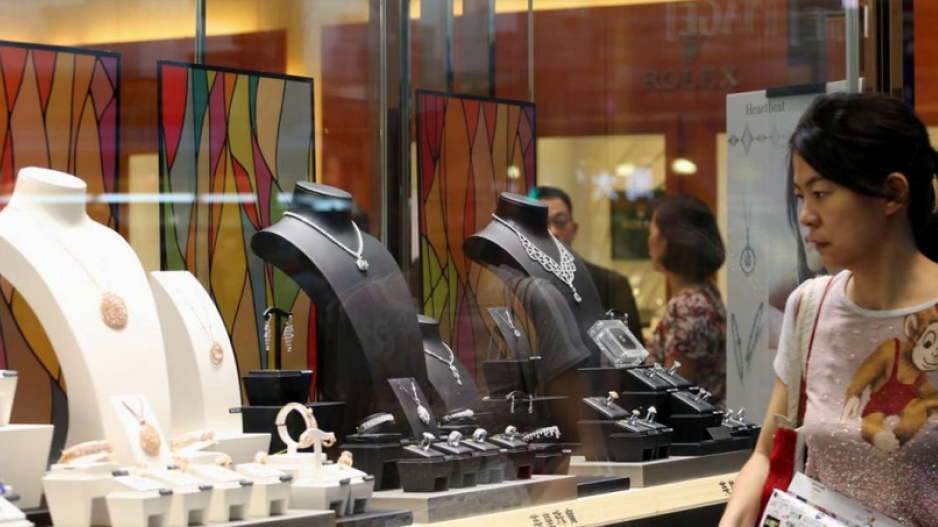Hong Kong’s luxury jewellery and watch retailers are bracing for a recovery, as mainland China’s nouveau riche flock back to the city to splurge on glittering Swiss timepieces and opulent platinum necklaces, but this time for themselves rather than gift-giving.
The resumption of spending helped return tycoon Albert Yeung Sau-shing’s Emperor Watch & Jewellery to eke out a second-half net profit of HK$3.8 million (US$490,000), reversing several quarters of losses.
“There are mounting signs of a recovery in our watch sales, and we noticed a pickup in demand from mainland shoppers over the latest two quarters,” the company’s chief executive Cindy Yeung, who is a daughter of Albert Yeung, said on Friday.
China’s breakneck economic growth over the last four decades has seen mainland tourists become the biggest group of patrons of Rolex and Patek Philippe watches at Hong Kong’s lavish jewellery shops.
But a ferocious Communist Party crackdown on corruption and conspicuous spending since 2013 has taken a particularly heavy toll on luxury jewellery and watches – favoured as bribes by Chinese businessmen seeking to curry favour with bureaucrats.
As Chinese big spenders shied away, foot traffic dwindled and retailers’ revenues slumped – often by double digits. The downturn in Hong Kong dealt a blow to Geneva, prompting Richemont, the conglomerate that produces Piaget and IWC timepieces, to slash hundreds of watchmaking jobs in Switzerland over the past two years.
Hong Kong’s retail rents also forced many struggling jewellers around the city’s iconic shopping strips such as Causeway Bay’s Russell Street to close.
Signs of a recovery are back. Chow Tai Fook, the world’s biggest listed jeweller by sales and the industry bellwether, said in a filing that its key business indicators for the last quarter of 2016 pointed to “stabilising fundamentals”. The decline in same store sales, a crucial gauge of a retailer’s profitability, narrowed to 2 per cent for the period from a dip of 30 per cent a quarter earlier.
Richemont in January said robust demand for jewellery from Asia-Pacific and leaping watch sales had propelled overall revenue to a 5 per cent growth in the fourth quarter.
Industry insiders reckon the recent reinvigoration lies in the return of mainland consumers to the dazzling boutiques in Central and Tsim Sha Tsui – as suggested by a rebound in tourist arrivals. Unlike several years ago, the visitors shop to indulge themselves.
Despite a sluggish economy, hundreds of millions of inhabitants across China’s less-developed third or fourth-tier cities have savoured a steady growth in their prosperity, thanks to climbing wages, a house price boom and a year-long stock market rally.
While the well-off in the metropolises of Beijing and Shanghai tend to redirect their spending towards experiential luxuries, such as travel, many of the newly affluent in smaller towns still prefer Rolex and Patek Philippe watches as a display of wealth.
“We think the wealth effect is boosting mainland consumers’ luxury spending,” said Mariana Kou, a consumer analyst with CLSA. The term refers to a tendency that people will spend more if they perceive themselves to be richer.
Yeung said the company’s turnaround will also be aided by local landlords’ decision to slash retail rents by as much as 40 per cent. Lower rents have already encouraged global fine jewellers, including India’s Nirav Modi and France’s Chaumet, to extend their footprints in Hong Kong.
Read the original article on the South China Morning Post




